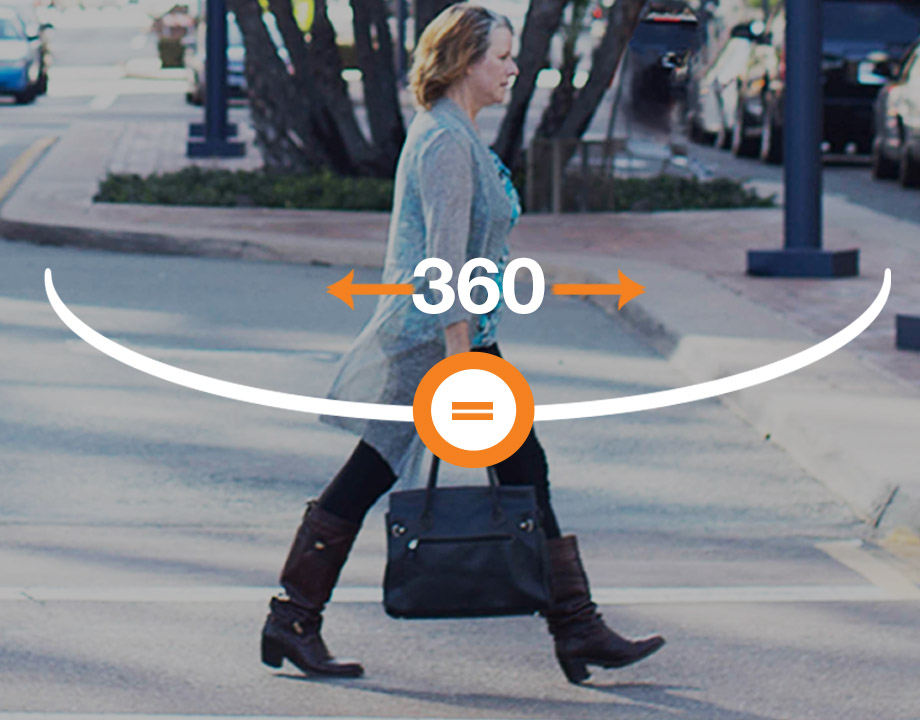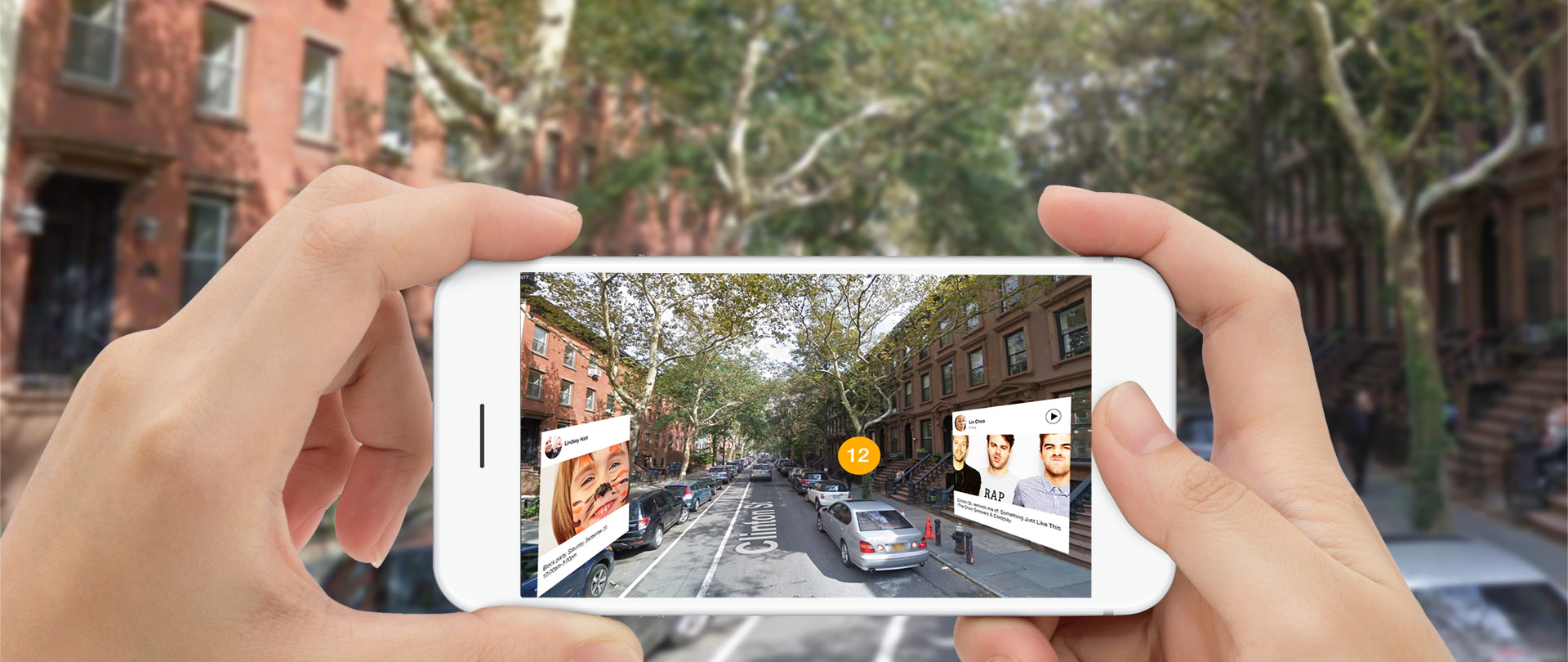
Connecting the neighborhood.
Problems
- Despite being digitally connected globally, based on research, nearly 1 in 4 adults feels lonely, with the highest rates being among young adults ages 19-29.
- Chronic loneliness has been linked to increased risk of stroke, heart disease, dementia + predicts increased mortality.
Challenges
- How might we influence neighborhood community connections despite challenges such as rental occupants that may change regularly, individuals’ lives running on different schedules, + the population that potentially reflects a variety of cultures, ages + family sizes?
- How might we utilize Google platforms?
Solutions
- Connect people that live within close proximity through transforming public spaces in neighborhoods by adding a customized content layer onto Google Street View.
- Recognizing local businesses as social hubs.
Result
- Following prototyping + testing, a layer of customized content was used in other use cases.
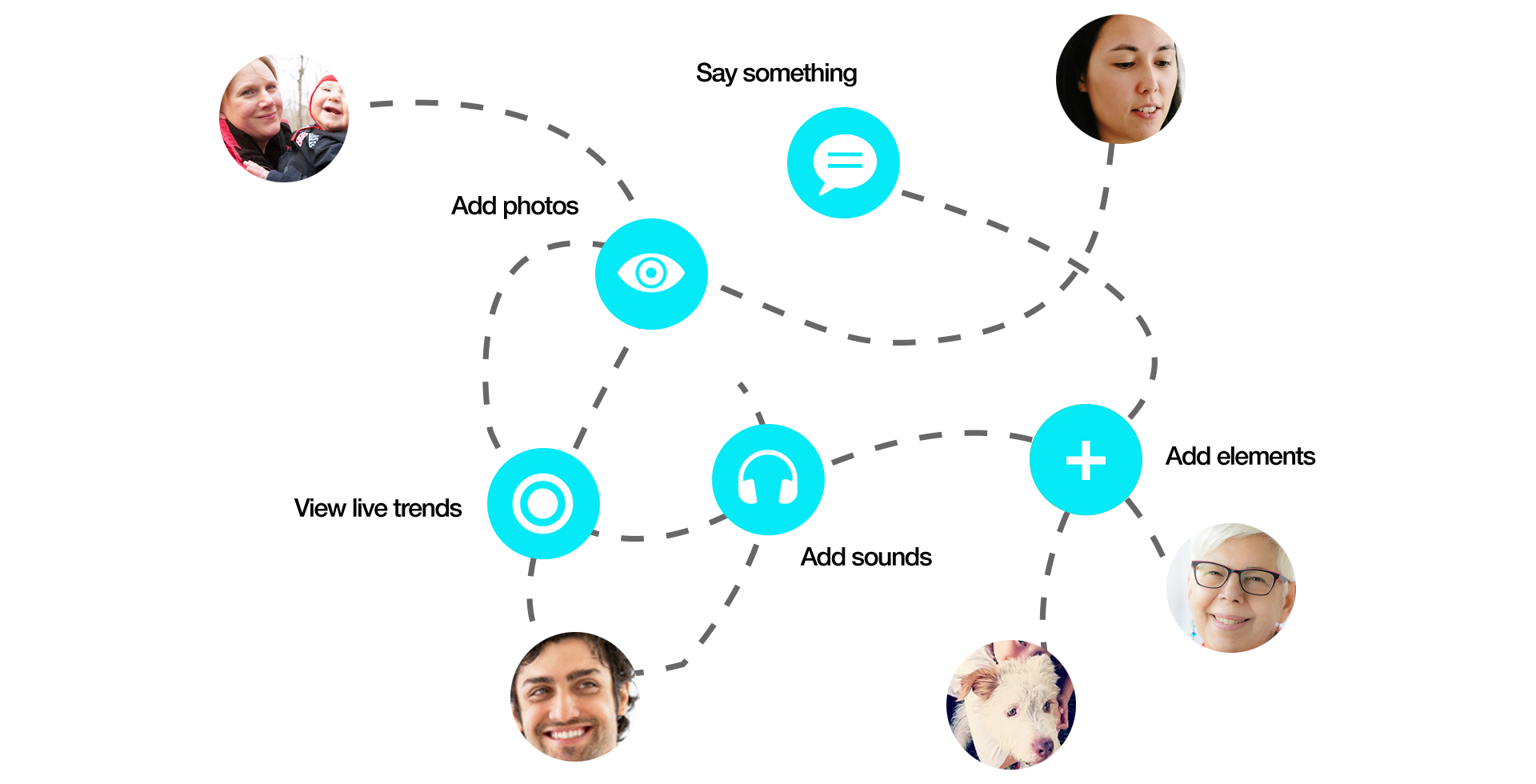
Create social touch points using Google maps.
Transform public spaces in your neighborhood into personal spaces by adding your marks as layers of content on Google’s Street View. This enables you to connect with your neighbors on a new level, while encouraging others to do the same.
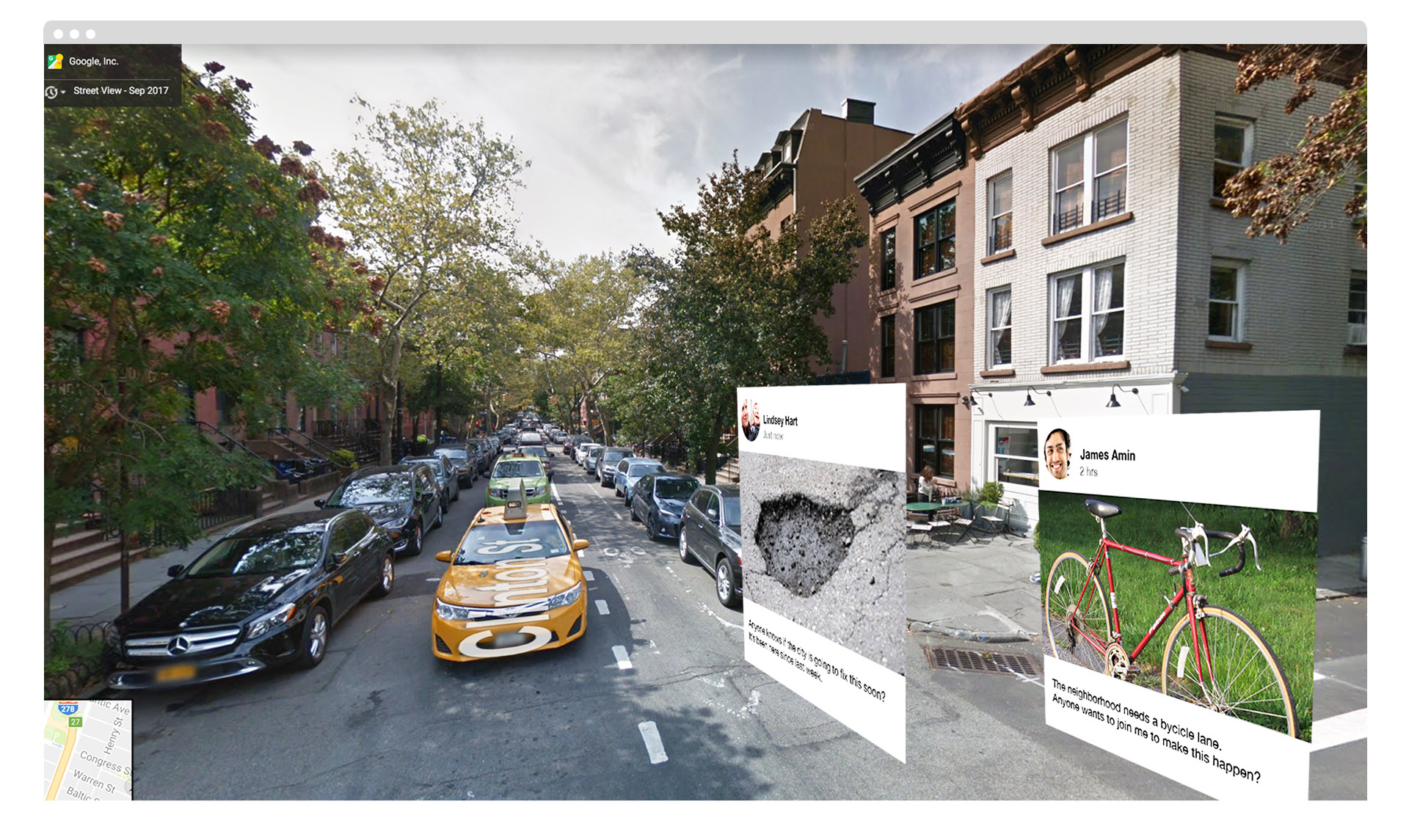
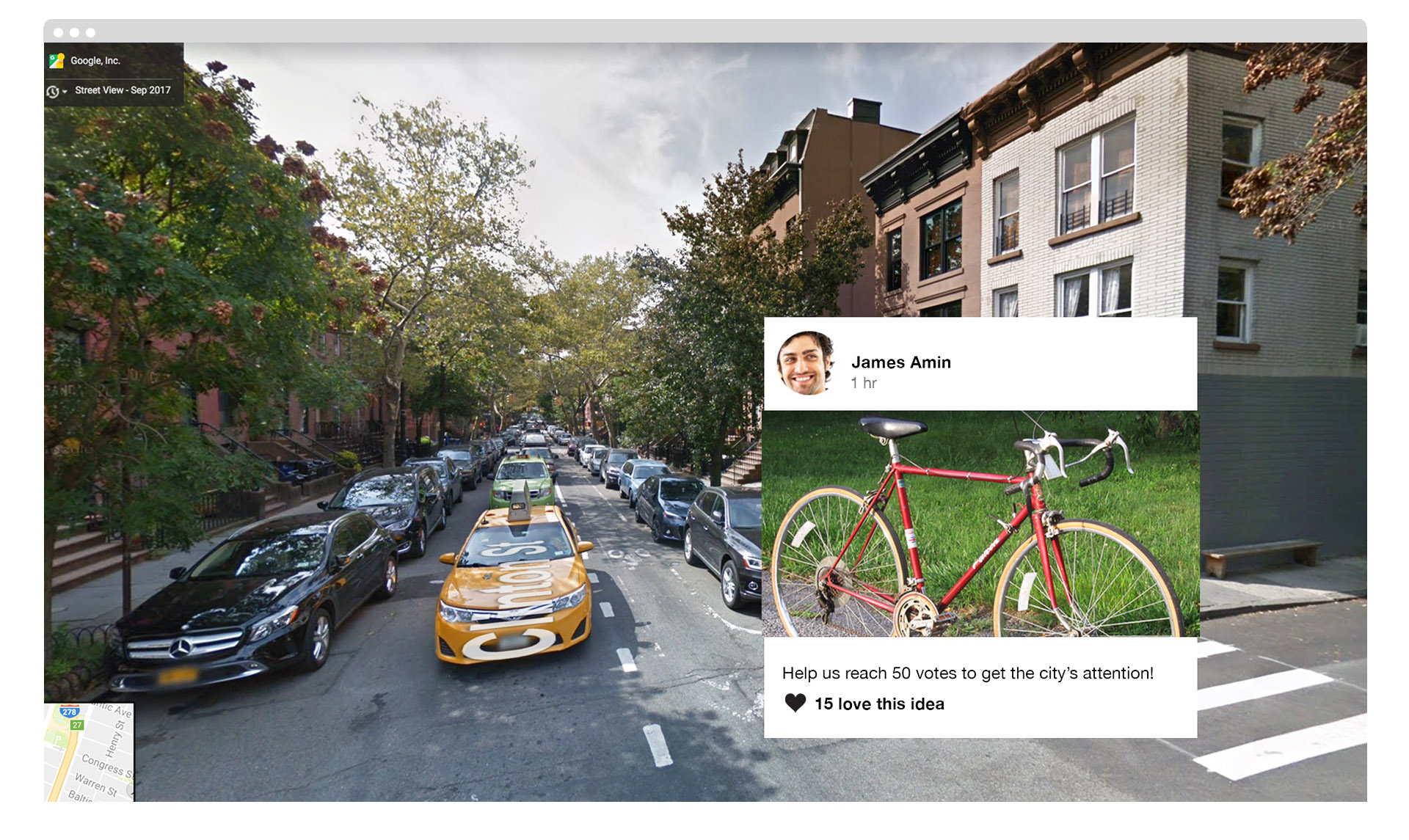
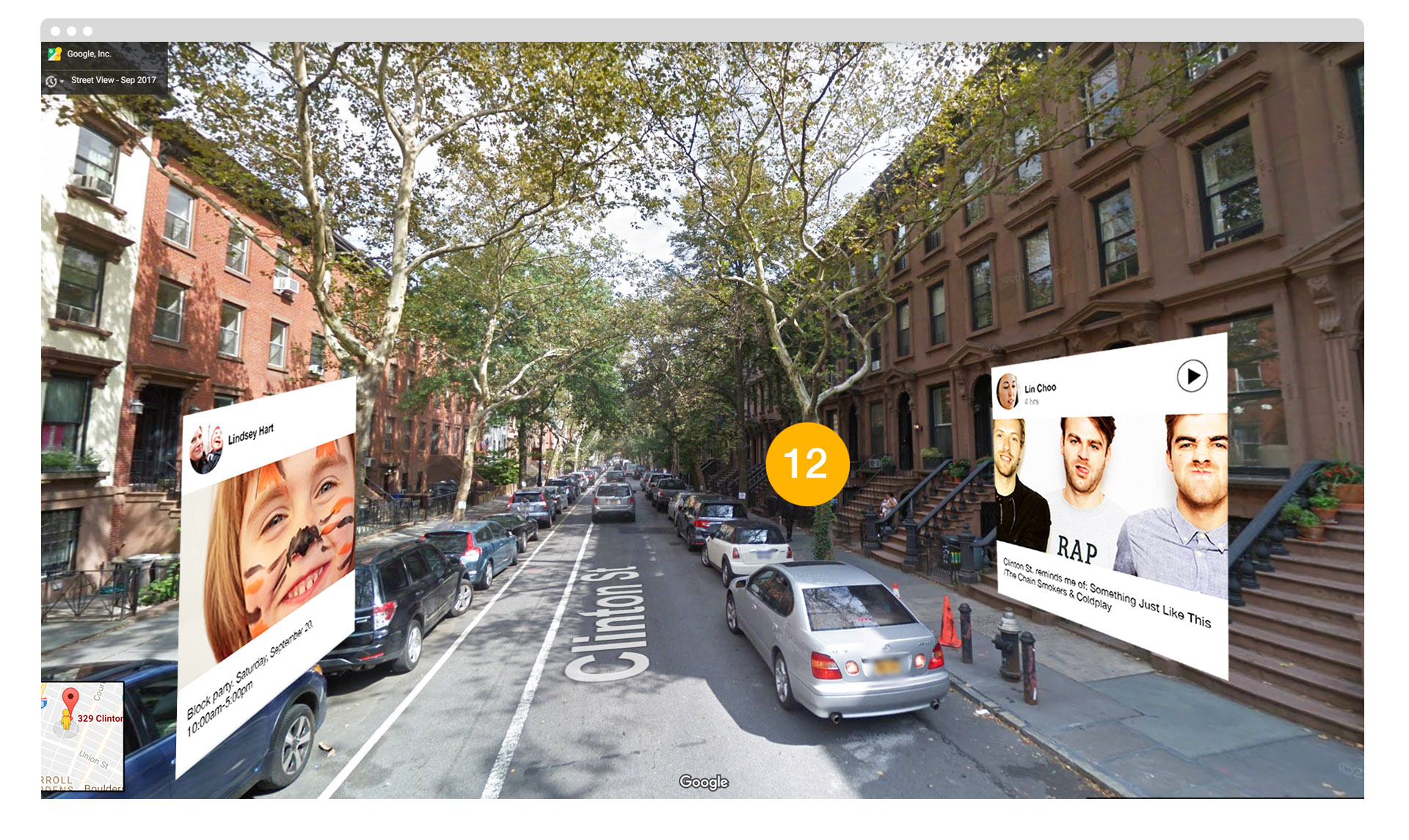
Discover local businesses as social hubs.
Local businesses are struggling to survive, competing with online retail prices, but everyone wants to have amenities around since it gives a neighborhood its vibe. Amenities are listed as one of the three main reasons people choose to live where they do. Around is a platform that lets you:
- Join or create groups based on shared interests.
- Meet neighbors.
- Buy together at local businesses by matching online prices with ground purchase discounts.
- Receive same-day deliveries.
- Create or join fun events at local businesses.
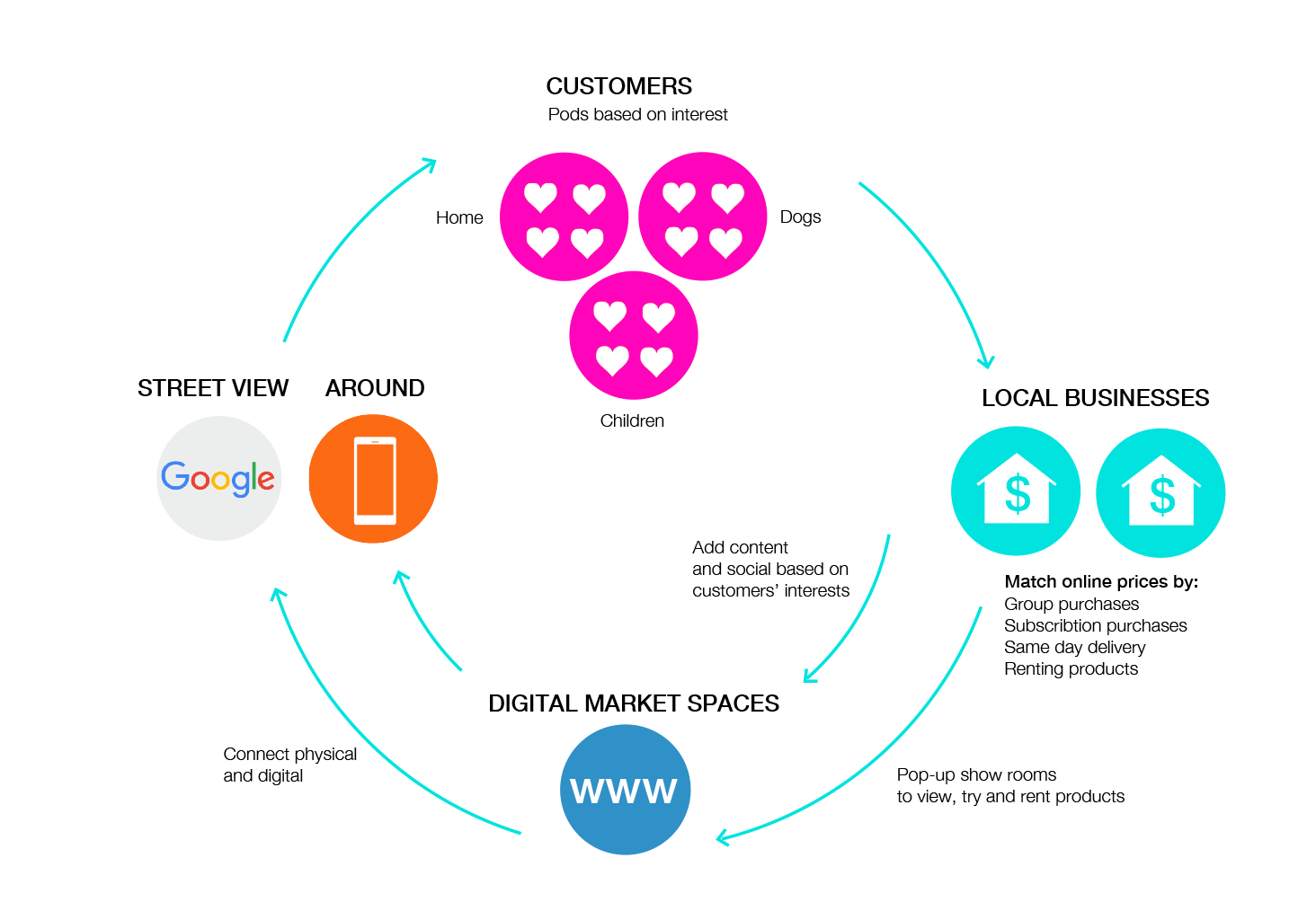
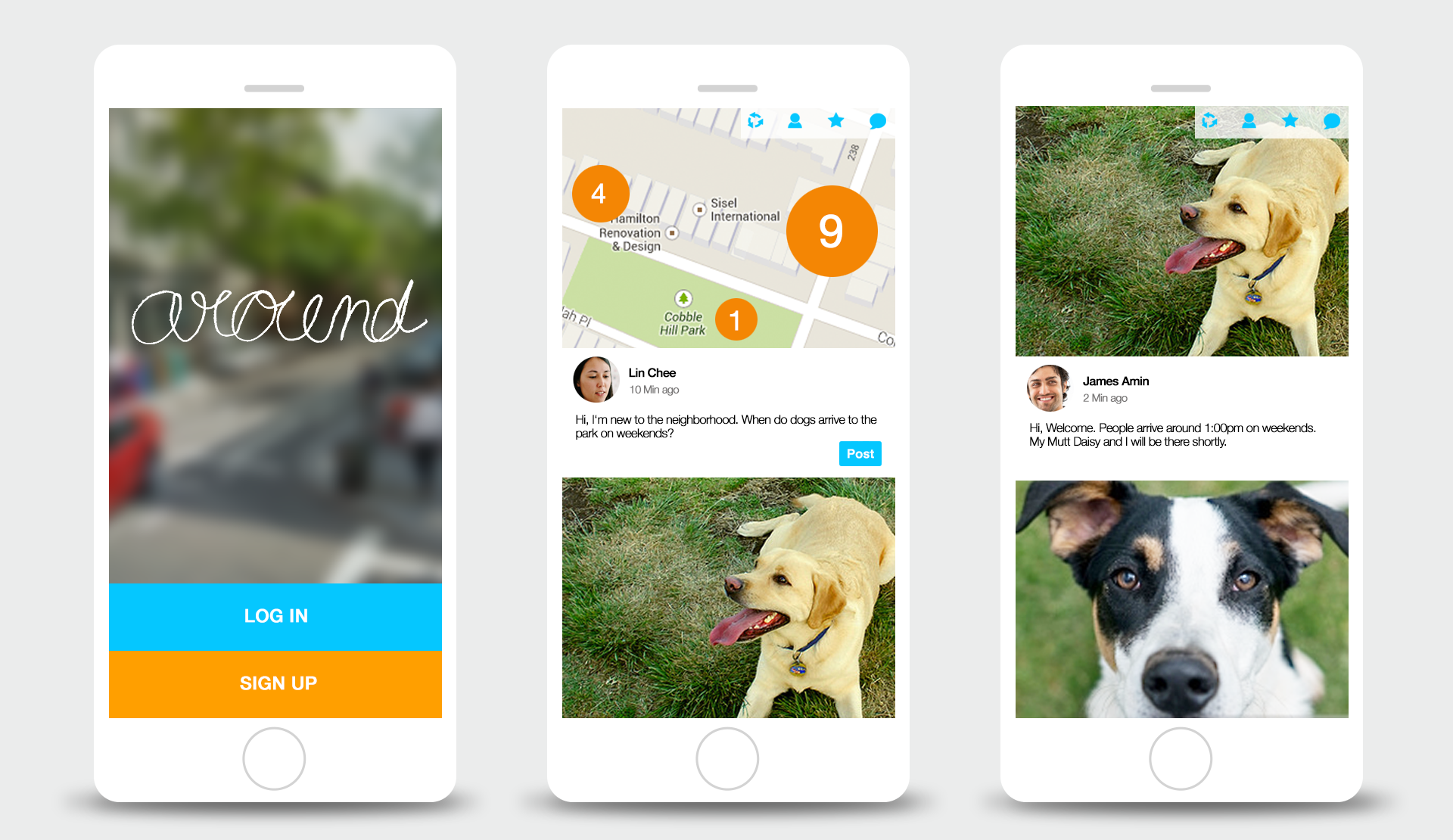
Connecting the neighborhood.
Creating a symbiotic ecosystem where you’re building relationships in communities that host them. It benefits individuals: Make new local connections and save on group purchases. Benefits businesses by transforming the local business into a social object. The group host asks three local pet stores if they would provide group discounts and same day delivery. In return, they’ll purchase the food once a month on a regular basis. One responds with the best price. Based on the group’s interests, a few weeks after, the store offers to host a dog trainer lecture at the store after business hours.




